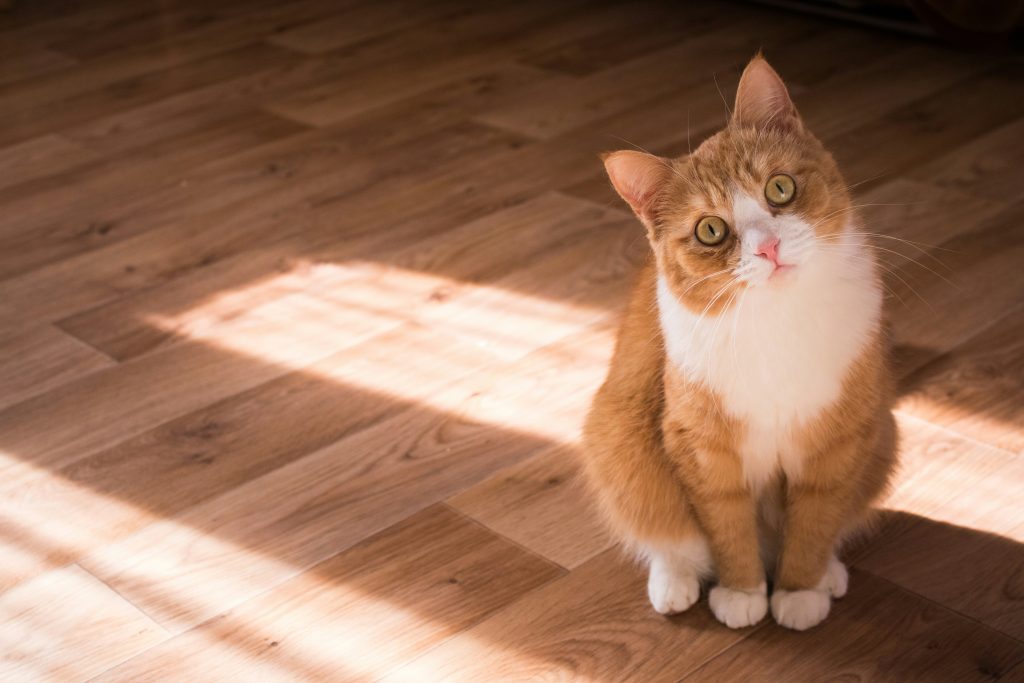Pets and Their People Blog
Cat Not Using the Box? It Could Be the Litter Box Setup!
Unwanted elimination is one of the most common behavioral reasons cats are surrendered to shelters.
Why is this problem so common? And what can be done about it?
First, take your cat to the vet to check for possible medical causes. If the cause isn’t medical, it could be behavioral, such as separation anxiety, inter-cat aggression, or outside threats. In these situations, I’d recommend you contact a cat behavior consultant to help you problem-solve.
As a cat behavior consultant, experience has taught me that elimination issues are often due to the litter box setup. Keeping in mind that litter box setup is about what is best for our cats, not what’s best for us, I’ll start by asking clients to consider the following:
Have you used a black light and an enzyme cleaner to find and eliminate urine stains?
Black lights can be used to detect urine, among other things. Enzyme cleaners break down the ammonia and bacteria in cat urine and other organic matter. These tools are important because if the cat elimination smell isn’t taken care of properly, it can lead a cat to eliminate repeatedly in the same area (outside the box).
Once urine stains have been dealt with, I’ll turn to a series of questions about litter box setup.

(Photo by Kristina Yadykina on Unsplash )
Is the litter box clean?
Once or twice a day, scoop pee and poop from the box; add more litter when necessary. At least once a month, dump the litter, and clean the box. (If you’re using non-clumping litter, it should be replaced at least once a week.) Soak the litter box in hot water and, if desired, add some liquid dish soap. You might also use a small amount of vinegar or baking soda to remove smells. Avoid products with ammonia, bleach, or other harmful ingredients.
A dry scrub brush will help remove litter from corners or other stuck-on litter.
Consider replacing litter boxes once a year, or when there are a significant number of scratches on the box, as the scratches will be difficult to clean and are therefore more likely to harbor bacteria.
Is the litter box in the right location?
Just like us, cats don’t want to have to walk a long way to use the bathroom, and so litter boxes shouldn’t be too far off the beaten path, no closets, basements, or garages! However, cats appreciate privacy and quiet when using the bathroom, so litter boxes shouldn’t be placed in high-traffic areas; avoid the kitchen and laundry room!
Another thing to consider is escape routes. Cats need litter boxes to be placed where they can view the room and where they can’t be ambushed by other cats with no way to escape. For example, you might place boxes in an area opposite the room entrance.
Finally, cats don’t like to use the bathroom where they eat and drink; so keep litter boxes and feeding stations separate.
Is the litter box the right type?
According to a 2013 study in the Journal of Feline Medicine and Surgery , most cats didn’t have a preference between open and closed litter boxes, but some did. Similarly, some cats detest the noise of self-scooping boxes while others aren’t bothered. The downside to self-scooping boxes is that you’ll miss the opportunity to see how often your cat is using the bathroom and if there are potential health issues.
Is the litter box the right size?
Cats need to have room to enter, turn around, give the litter a few kicks, and eliminate. The rule of thumb is that a litter box should be at least 1.5 times the body-length of your cat (don’t include the tail). In general, cats prefer large litter boxes, even ones that are larger than the recommended size.
Unfortunately, the majority of commercially produced boxes aren’t big enough, especially covered ones.
For that reason, many cat guardians choose to make their own litter boxes out of large plastic storage bins. (Look for bins that are 80-quarts or larger.). Also, it’s recommended that the sides be six inches high, but that kittens and seniors will need at least one lower side.
Maintain a 2-3 inch level of litter in each box.
- Scoop the boxes once or twice daily.
- Avoid placing litter boxes in closets, basements, garages, high-traffic areas, laundry rooms, or kitchens.
- Keep litter boxes and feeding stations separate.
- Box size: at least 1.5x the body-length of your cat; sides 6″ high; at least one lower side for easy access in and out.
- Provide at least one more box than the number of cats you have.
- Place at least one box on each level of your home.
- Many cats seem to prefer unscented, soft, fine-grained, clumping litter.
- The litter box set up that works best for one cat may not work best for another. Give cats options.
Do you have enough litter boxes?
The rule of thumb is to have at least one more litter box than the number of cats on the level of your home that they primarily occupy, and to have at least one litter box on each other level that your cats have access to. This equation gives cats a choice of which “toilet” to use, doesn’t force them to use an overly soiled litter box, and ensures that there’s always a litter box nearby.
Is the litter the right type?
According to Fear Free Happy Homes , studies have shown that cats prefer unscented clumping litter. They also prefer soft and fine-grained litter.
To find out what your cat most likes, set up a “litter box cafeteria test.” To do this preference test, set up several litter boxes side by side filled with different litters, scoop them all twice a day at the same time, and note which one your cat uses the most often. Note: Litter must be the only variable for this test to work.
Did you change anything in your house around the time your cat stopped using the litter box?
If something minor was changed, change it back! If it was a major change, you’ll need to help your cat adjust . For example, if you renovate your home, try rubbing your cat’s scent on the renovated area to help your cat feel comfortable again.
What if you have the” ideal” litter box setup?
Keep in mind that each cat is unique, with their own preferences and sensitivities. What works for one cat may not work with another cat. In addition, as cats get older, their tolerance level for stress decreases. And, a less-than-ideal litter box setup can increase stress levels, and so one day your cat might decide the setup no longer works.
Again, litter box setup is about what is best for our cats, not what’s best for us.
Reference
Grigg EK, Pick L, Nibblett B. Litter box preference in domestic cats:
covered versus uncovered. Journal of Feline Medicine and Surgery.
2013;15(4):280-284. doi:10.1177/1098612X12465606
About the Author

Allison Hunter-Frederick is a Certified Cat Behavior Consultant and Trainer. She is also the mother of three fur kids and several revolving foster cats, host mom to international exchange students, and wife of a supportive husband. Through her business Allison Helps Cats LLC , she uses her knowledge of cats to help cat owners and animal shelters with their cat behavior needs. Unwanted cat elimination is one of the most common behavior issues cat owners hire her to help with.

